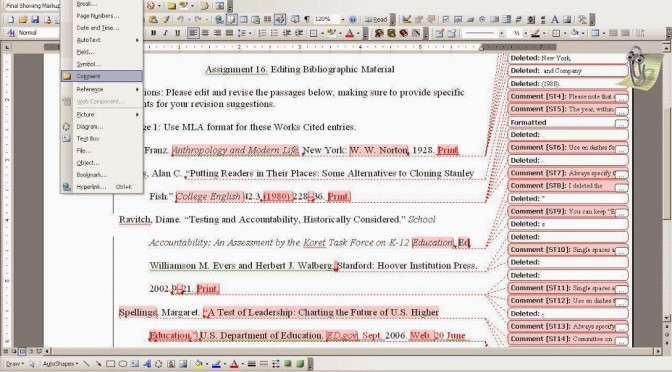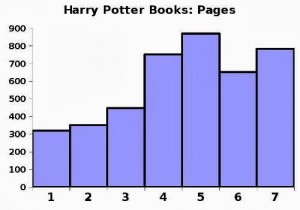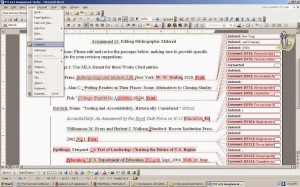So, as of my writing this (December, though you may see this in the future, hi future!), the National Novel Writing Month just ended and you (the hypothetical you) have just spent the last month putting together the rough draft of your novel. Some of you might have done it for a laugh or just to prove to yourself that you could do it. But I know for a fact there’s a lot of you out there right now who intend to publish or try to publish what you’ve so painstakingly put together. In fact, I’ve heard from multiple sources that the first week in December is one of the busiest times of the year for agencies and publishers as they see a sudden influx of manuscripts.
This is a bad idea.
I understand, you’re incredibly enthusiastic about what you just put together. But, please, be aware that you wrote your piece in less time than it takes some casual readers to actually read the thing – you may want to edit first. And, actually, in the spirit of hyping internet trends that promote writing, remember that Pitchmas is coming.
What’s Pitchmas? Well, Pitchmas is a magical time when you can take your manuscript and pitch it directly to agents and editors rather than going through the dreaded slush-pile. However, one thing that is an absolute requirement is that your manuscript is complete and polished. That polished requirement can be a real pain in the ass and not a lot of people are prepared for it.
However, the free-for-all #pitchmas day is the 20th of December this year, so you’ve got a little over two weeks to try to polish your work. Mind you, that’s still not the recommended length for editing time, but I’d rather you do that than submit the very next day.
Unfortunately, no one likes to edit. In fact, it’s probably one of the most painful parts of writing. So, let’s talk about how to go about it with minimal meltdowns.
1. Read it aloud
This is one of the most commonly shared pieces of advice on the internet, so I’m getting out of the way first. When you want to edit your work you’re going to want to read it to yourself, out loud and where you can actually hear your work. This will be one of the fastest ways to detect all of the little hiccups in your grammar, flow and sentence structure. If it sounds awkward when you’re reading it, it sounds awkward when other people are reading it.
It seems like a silly concept at first, but remember that most of the time when you read silently you’re scanning rather than fully comprehending. There’s also a tendency for the way something looks to not perfectly match how it sounds. For the quickest example of this, I share this video:
That teleprompter led that anchor down a dark road and they couldn’t have possibly known that until they read it out loud. Here’s the stupidest part too, clearly no one ever read it at any step of the production process. You should try to avoid making the same mistake.
2. Edit for Flow, not Length
This is an important thing to remember. When you’re reading the story you’re going to notice how easy or hard it is to get from one page to the next. This is what you should focus on. A lot of people on the internet are going to tell you to make the story as short as possible because conventional wisdom has always been that shorter books are more likely to be received well.
This is bullshit.
If you look at the sales figures for the most successful books in the past decade you’ll notice that a lot of them are incredibly long. In fact, by conventional wisdom, JK Rowling was almost never published in the first place because her books tend to be way over 100,000 words. But that would have been a mistake, clearly.
Why is this conventional wisdom then if the numbers say differently? Frankly, it’s because conventional wisdom was created by publishers and publishers had to worry about how much your book would cost to publish. Every page you put to print was additional cost to the bottom line. This meant that publishers would tend to reject manuscripts that were “too long” because they were trying to mitigate their risk.
It’s a brand-new era however. Print costs can be minimized because of the revolution of eBooks and the audiences in the world have shown that they are perfectly willing to read longer books if those books are good. So focus on your flow more than length. If you wrote this for NaNo you’ll probably only have roughly 50,000 words anyway so any attempt to make it “more succinct” will cause only harm to your narrative.
I learned this lesson the hard way when working on my first novel when someone told me that they felt it needed to be 12,000 words shorter than it was. Like an idiot, I started to obsessively cut at it to squeeze that space out of it. The end result was a disjointed, ugly draft that I regretted making. Just because “conventional wisdom” tells you to do something, don’t do it. Also, the same works in reverse, a shorter novel is perfectly fine to submit as well, The Time Machine was roughly only 32 thousand words and that was a classic.
3. You are your own worst judge
Another thing to avoid trying to fix when you’re doing the second draft is anything dealing with the plot. It’s perfectly okay to nix smaller scenes, but larger plot elements that you feel aren’t working for you are things you will want to hold off on until the third draft. After all, the person who hates your work more than anyone else is you.
At any given time, any author has the chance of hating about 50% of what they just wrote. It’s inevitable that you’re going to read something you just finished, only to find this strange feeling like you need to rewrite the whole damn thing. This would be a bad thing because you don’t really know whether or not what you just wrote actually works or if you’re just hating on yourself due to insecurity.
In fact, like I said back when I covered writing mysteries, there are some details in your plot that just will never work for yourself the way they work for someone else. You won’t ever be surprised by something you wrote. You won’t be as scared of the monster you cooked up as someone else. You will never be as in awe of any of your truly great ideas as a third party might be. One person in the world has seen every single thing in your novel before: you. It’s incredibly easy to become jaded about that.
So, before you go writing that third draft and changing plot details, it’s a good idea to…
4. Get a VARIETY of Test Readers
 |
| Surely someone in this group has to be able to read. |
After you’ve smoothed out any rough bumps in the flow of your story and you’ve corrected your grammar enough to feel confident in calling what you have a “second draft”, it’s time for the next stage. Luckily, if you’re planning to publish this or pitch it to an agent then you’re ready to show it to people in general. This is good because it’s time to find a handful of people to read your work and give you honest feedback.
However, do not just show it to people who you consider the people that are “safe”. You are going to want a variety of people from different backgrounds and viewpoints that you trust can be honest with you. You’re going to want to find people who have wildly differing opinions on subjects and details. So long as you have a bunch of people with different views, you’ll be able to use them to tell you when something is more than just a matter of perspective, it’s an actual problem.
If one person happens to not like a detail of your story, then that person may just not like that plot device in general. If a whole pack of varied people dislike a plot element, you may have done something wrong with it. That’s when you change it, when a group of people can all agree that there’s something off about that aspect of your story.
And when that feedback does come back, please remember…
5. Mistakes are only a fraction of your work
When you receive feedback from your readers, or a copy with notes on changes they think you should make, it’s going to feel like being in a warzone. You’re going to see a lot of red on that page when they scratch out mistakes and jot down corrections. In fact, it’s not entirely unusual for you to see red marks on every single page of your draft when it gets back to you. That can be overwhelming to look at, even downright crushing. Hell, look at that screenshot above and tell me that you wouldn’t be a little discouraged seeing that on your screen.
But you have to remember that the mistakes you’ve made don’t make up 100% of the work. The things you did right will always outnumber the things you did wrong. Though it’s entirely possible that you’ve made big mistakes along the way, it isn’t every single line. If that was the case, your readers would have told you to scrap the whole thing rather than mark down the things they thought needed to be changed. The whole page isn’t red, just a few lines and the margins.
So just keep that in mind as you go through this. Never let the fact there’s editing to be done discourage you. Everyone will have to do this at some point and most of us will have roughly the same amount of editing to do. In fact, I’d go so far as to say you’re going to spend as much if not more time editing most drafts than you spent writing the first. So don’t let the red ink scare you off, only an idiot would think they don’t need to edit.
And remember, we all make mistakes and they can all be recovered from…
So try not to get angry about them.
(If you want to see how I fared with editing, feel free to check out my books. Good luck on yours!)













One thought on “5 Tips For Less Painful Editing”
Comments are closed.